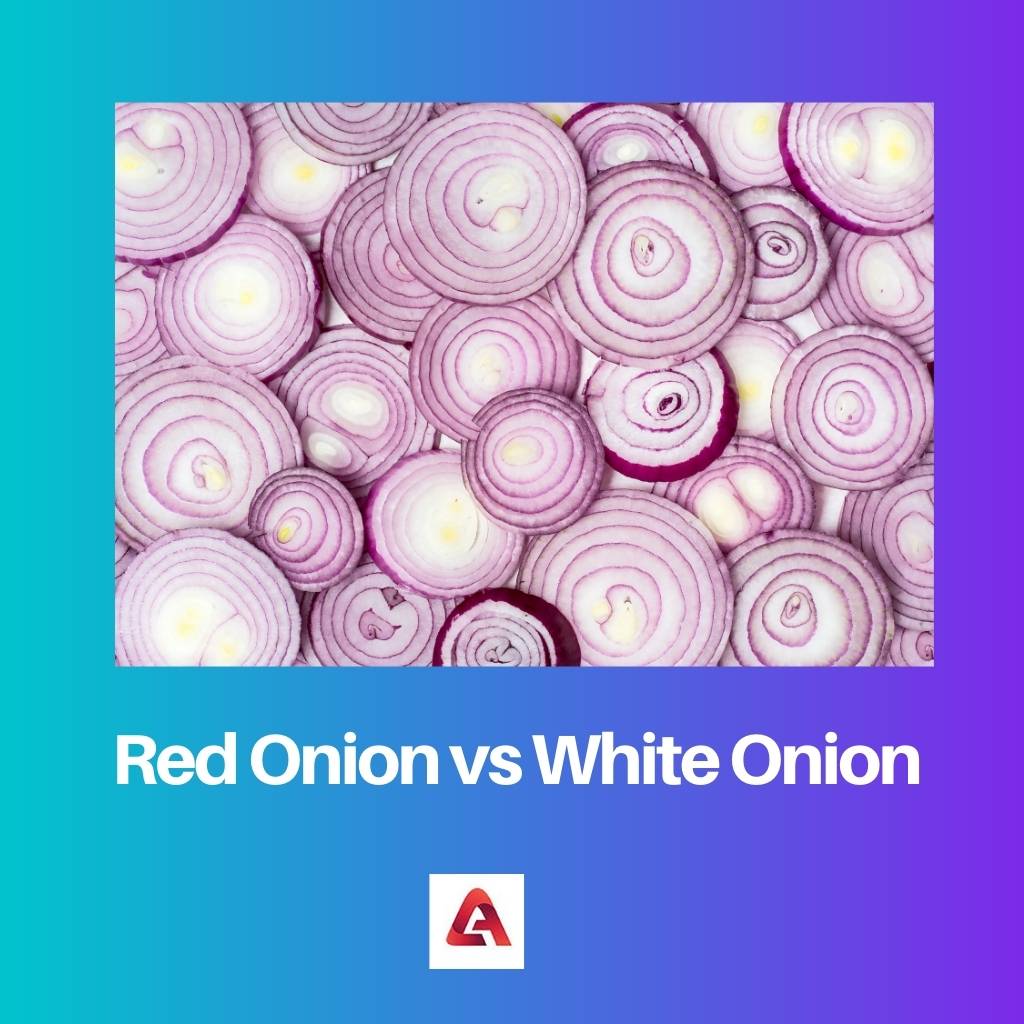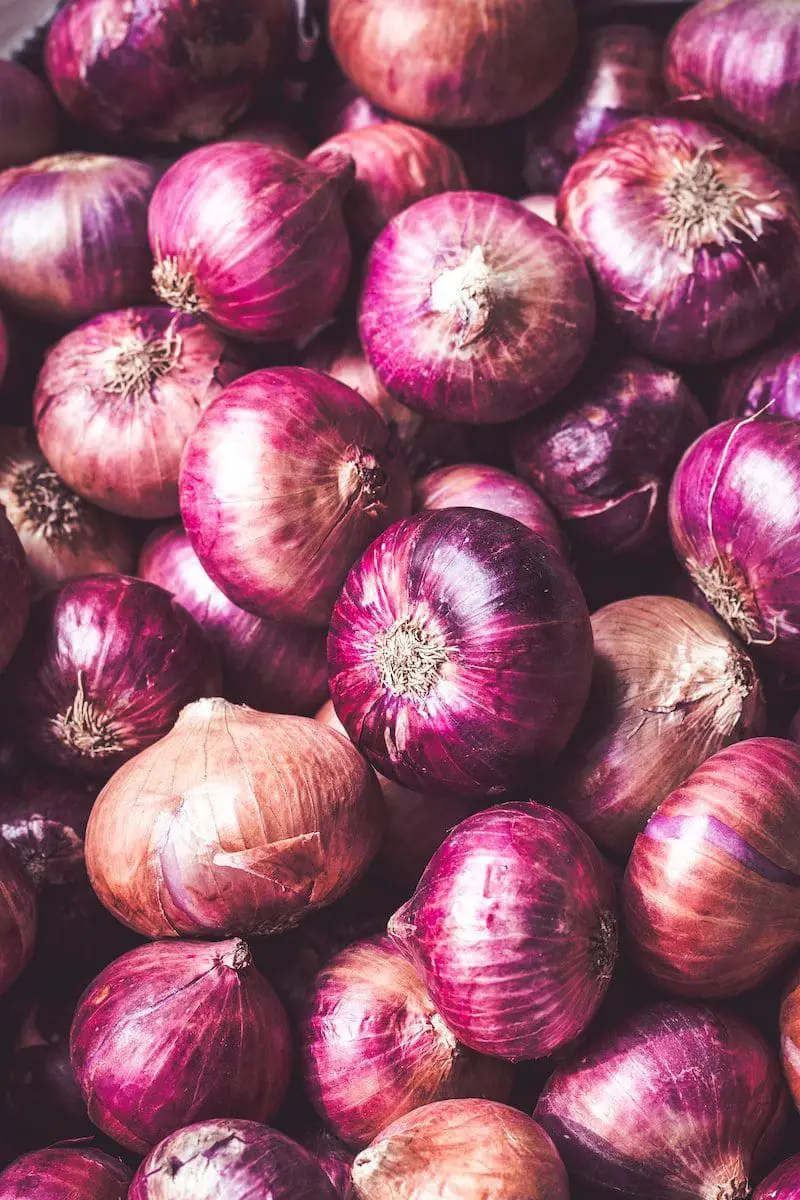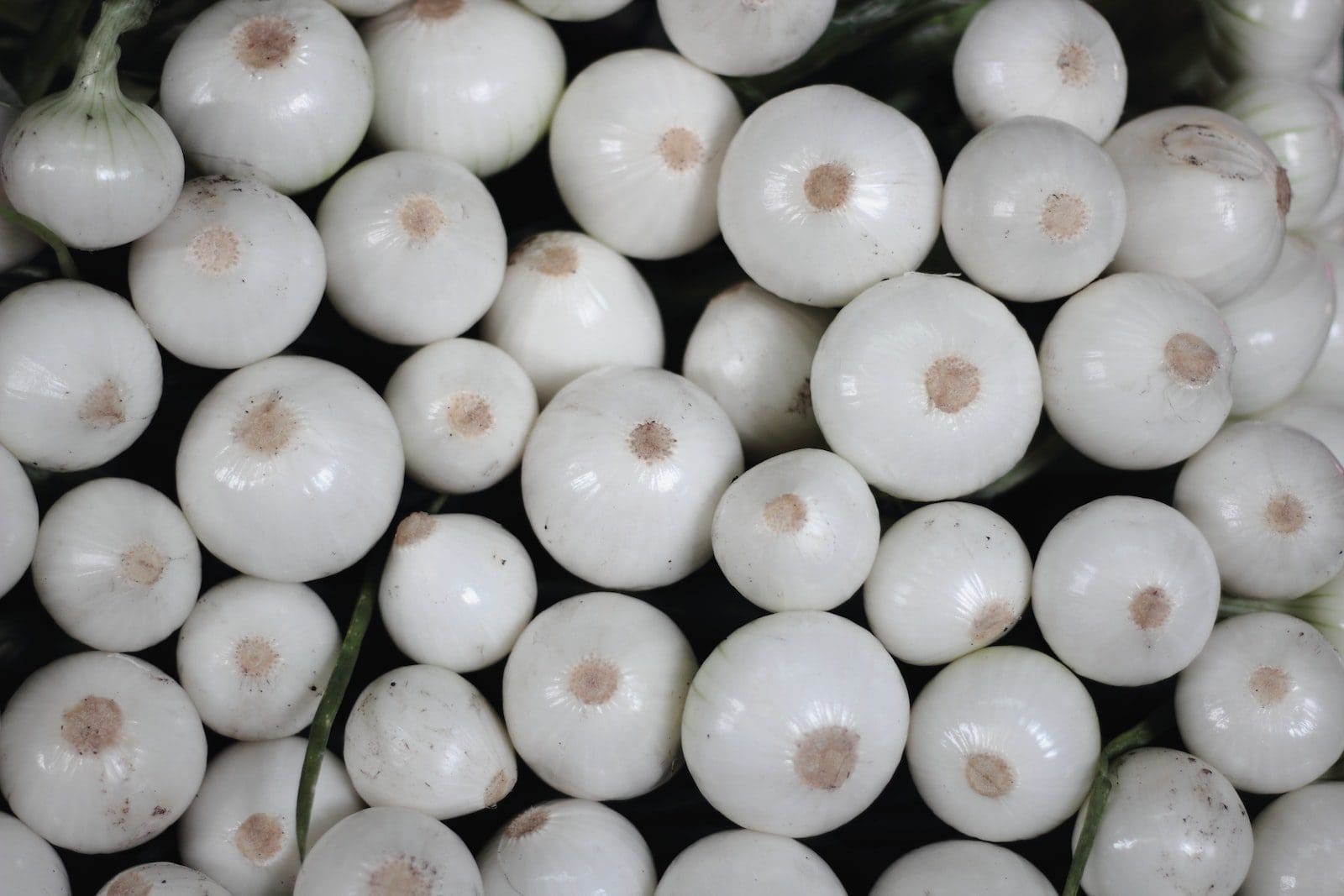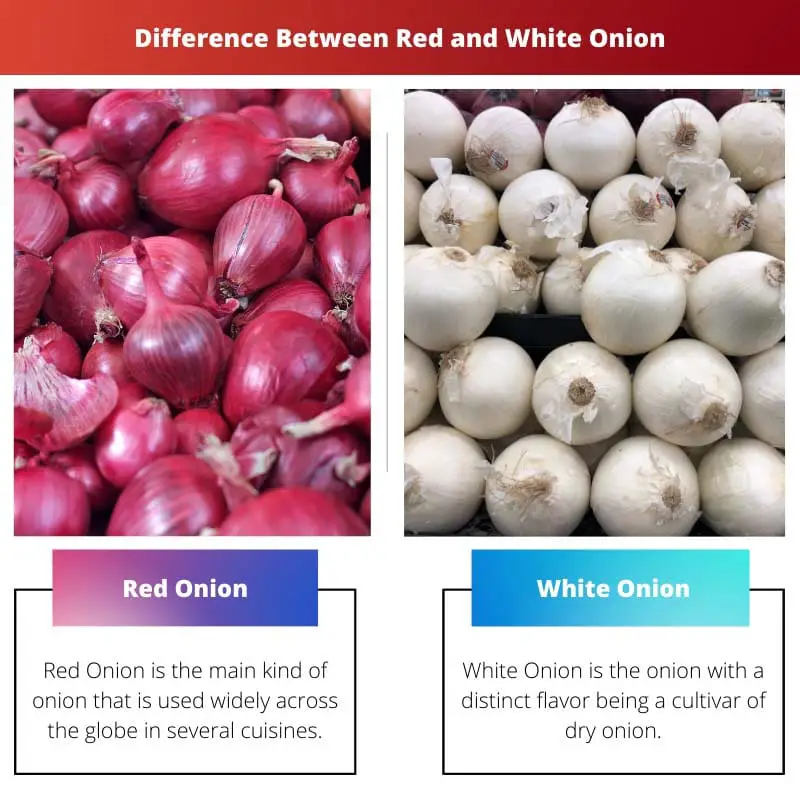Apart from adding a distinct flavor to the food, onions also have several qualities that are beneficial for an individual’s health.
Key Takeaways
- Red onions have a purple-red skin and milder flavor and are suitable for raw consumption in salads, sandwiches, and salsas.
- White onions have white skin and sharper taste and are used in Mexican cuisine and in cooking, grilling, and frying.
- Red onions are higher in antioxidants due to their pigmentation, while white onions contain slightly more sulfur compounds, which can provide health benefits.
Red Onion vs White Onion
Red onions have a deep purple or reddish skin and a milder, slightly sweet flavor, making them suitable for raw consumption in salads and sandwiches. White onions have white or pale yellow skin and a sharper, more pungent flavor, preferred for cooking and sautéing due to their stronger taste.

Red Onion stands out from the other types of onion owing to its color and appearance. As the name suggests, it has a reddish hue on the inside, and the outer skin has a purplish tone.
White Onion, on the other hand, is a little bitter to taste. It has a slightly pungent odor to it. Owing to its name, the inside and outside of this onion are completely white.
Comparison Table
| Parameters of Comparison | Red Onion | White Onion |
|---|---|---|
| Definition | Red Onion is the main kind of onion that is used widely across the globe in several cuisines. | White Onion is the onion with a distinct flavor being a cultivar of dry onion. |
| Color | Red Onion has a reddish-purple outer skin, and the flesh is white with a purple outline. | White onion has a white color in its entirety. |
| Texture | It has a crusty and crunchy texture. | It has a lighter and more papery texture. |
| Use | These are widely used in salads and several other cuisines. | They are added to dishes that need a slightly sour or bitter taste and are also used to make chutneys. |
| Benefits | It has more fiber and fewer calories as compared to the white onion. | It has slightly higher calories and lacks iron and fiber content. |
What is Red Onion?
Red Onion belongs to the category of onion, scientifically named Allium cepa. These are used universally in several culinary forms and cuisines.
These kinds of onions vary in size. They can be small, medium, or even slightly large. Usually, they are included in salads and added to several dishes to enhance the taste.
This is so because when the onion is sliced, the underlying cells tend to rupture, releasing a gas that irritates the eyes.
These onions are known for their rich fiber content. It is believed that red onions have the quality to eliminate certain kinds of cancerous cells as they act as antioxidants.

What is White Onion?
White Onion belongs to the family of dry onions. They are different from other types of onions because of their unique flavor, which is slightly strong and pungent.
The dishes that use white onion tend to give a mild and a little sour taste. This kind of onion is added to cuisines that have their origin in Mexico and Europe.
There are a host of folklore that revolve around the usage and benefits of the white onion, especially in ancient or medieval times.
White onion is a rich source of Vitamin C. But unlike Red Onion, it lacks iron as well as calcium content. It also contains slightly higher proportions of calories.

Main Differences Between Red and White Onion
- The former is mild and a tad spicy, whereas the latter has a more pungent odor and a stronger taste.
- Supposedly Red Onion has much more health benefits as compared to white ones, but it is also said and believed that White onions were medicinally and culturally vital in ancient times.




